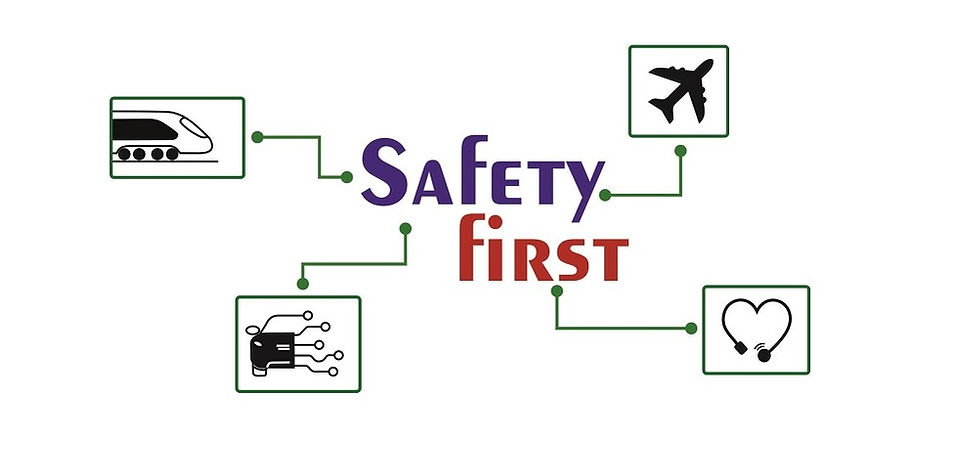What is AS9115A Quality Management System Standard?
- Umut Pisken

- 4 Haz 2021
- 4 dakikada okunur
Güncelleme tarihi: 27 Mar
AS9115A standard; is a quality management system standard developed for the organizations which are developing software for the aerospace and defense industries. The full name of the standard is as follows:
AS9115A Quality Management Systems - Requirements for Aviation, Space, and Defense Organizations - Deliverable Software (Supplement to 9100:2016)
The standard is not suitable for use alone, as it is a complementary standard to the AS9100. Therefore, organizations that want to establish a quality management system that complies with AS9115A must first establish a quality management system that complies with the AS9100 standard.
Due to this relationship between AS9115A and AS9100 standards, it is useful to give brief information about AS9100 standard, before giving detailed information about AS9115A. ISO 9000 series standards was first published in 1987 by the International Organization for Standardization (ISO). After it was seen that ISO 9001 did not fully address the requirements of aerospace and defense industries, the AS9100 standard was developed based on the ISO 9001 standard under the leadership of companies such as Boeing, Lockheed Martin, Northrop Grumman. The first version of the standard is called AS9000. However, this version of the standard was not recognized on a global scale and usage of it was limited to the above companies. In 1999, the first global version of the standard was published under the name AS9100. This version adds 55 new requirements to the ISO 9001:1994 standard on which it is based to meet the additional requirements of the aerospace industry. Since the AS9100 standard is based on the ISO 9001 standard, it has been updated in line with the new versions of the ISO 9001 standard. AS 9100 Rev D which is the current version of the standard, was published in 2016.
The AS9115 standard, which is developed to define additional quality management system requirements for AS9100 for organizations developing software for the aerospace and defense industries, was first published in 2010. The first version of AS9115 standard was based on AS9100 Rev. C. After AS9100 was updated from revision C to D in 2016, AS9115 was also updated and AS9115A was published in 2017.
Since both the AS9100 and AS9115 standards are based on the ISO 9001 standard, the Plan-Do-Check-Act (PDCA) cycle in the ISO 9001 standard is also the basis of these standards. The relationship of the stages of the PDCA cycle with the clauses of the AS9100 and AS9115A standards is given in Figure 1 – Relationship between the PDCA cycle and the AS9100 and AS9115A clauses.

Figure 1 – Relationship between the PDCA cycle and the AS9100 and AS9115A clauses
When the AS9115A standard is examined, it is seen that the name of the clauses are same as the AS9100. Under each clause, if additional quality management system requirements are defined for organizations developing software, these additional requirements are explained. If no additional requirements are defined, the AS9100 requirements are stated to be the same. For example; section 5.1 leadership and commitment in the AS9115A standard states that “The requirements of 9100 apply. No clarification required for software.”
For another example; the subclause “7.2 Competency” under the AS9115A standard Part 7 Support clause states that in addition to the requirements of AS9100, people working in software projects (engineering, quality, testing, etc.) must be trained and have the necessary experience according to the criticality of their work. The number of additional requirements defined in AS9115A according to the clauses in the AS9100 standard are summarized in the following table.
Table 1 -Number of Additional Requirements by Clauses of AS9115A
When the table above is examined, it is seen that no additional requirement defined for clauses 5. Leadership and 10 Improvement in AS9115A. When AS9115A is examined, the maximum number of additional requirements are defined in clause 8 Operation. Since the requirements, design and development processes for the product to be developed are explained under this clause, this is an expected situation.
When the scope section of the standard is examined, it is stated that the customer and the supplier must decide together to the applicability of the standard for complex electronic hardware containing HDL or PDL and, if applicable, which subclauses will apply. From this statement, it is understood that the AS9115A standard was not directly applicable to complex electronic hardware. Again in the scope section, a similar approach is taken for commercial of the shelf (COTS) software which will be used without modification, and in such a case, it is stated that the customer and the supplier should decide together the applicability of standard.
Some companies, such as Boeing, states that they expect AS9115A compliance from their software subcontractors. Since, companies can not uniquely certified to AS9115A, it seems appropriate for software manufacturers to first establish and certify an AS9100 compliant quality system, and then add additional requirements defined in AS9115A to their quality system. On its website, Boeing informs that the AS9115 approvals for its subcontractors are performed by Boeing software auditors via second party audits.
As a result, the AS9115A quality management system standard is a basic standard that companies developing software for the aerospace and defense industries can use when installing a quality management system.
Kaynaklar:
1. AS9115 Rev. A , “Quality Management Systems - Requirements for Aviation, Space, and Defense Organizations - Deliverable Software (Supplement to 9100:2016)”, SAE, 2017.




Yorumlar